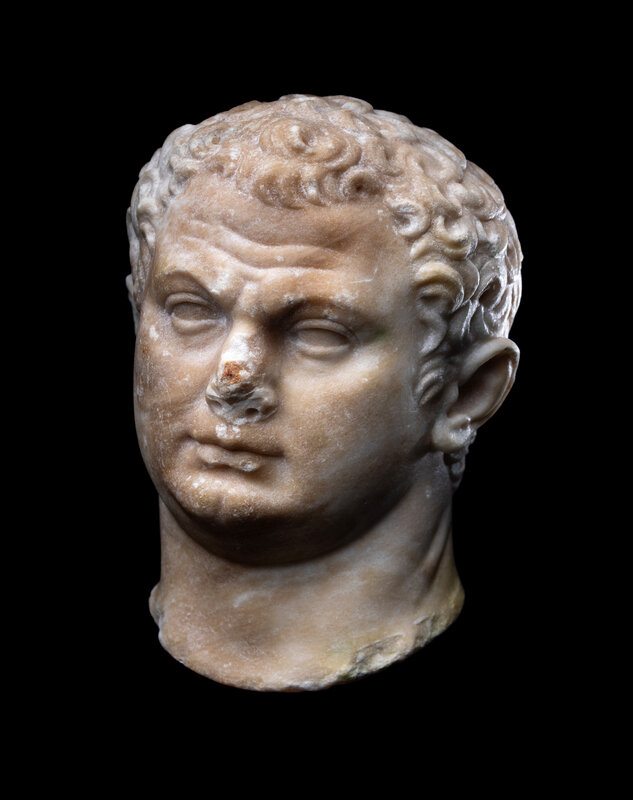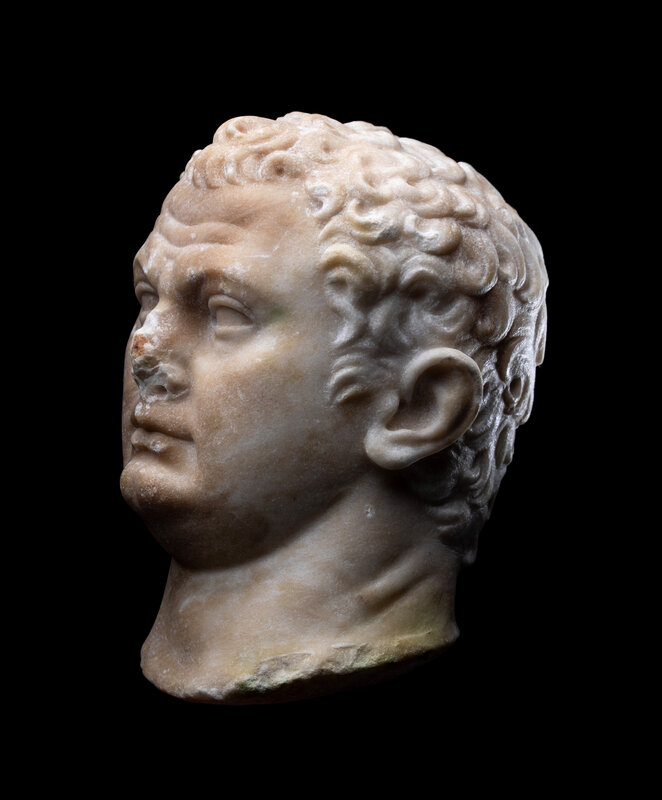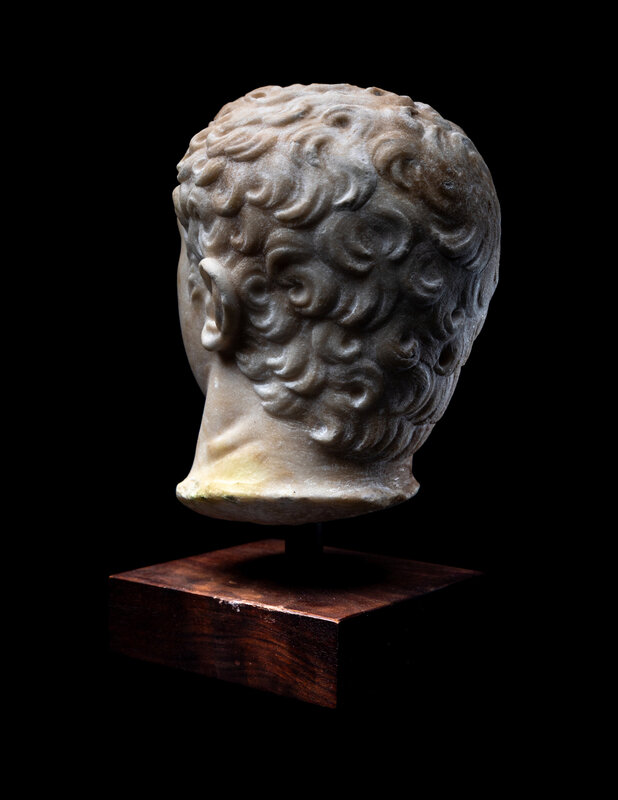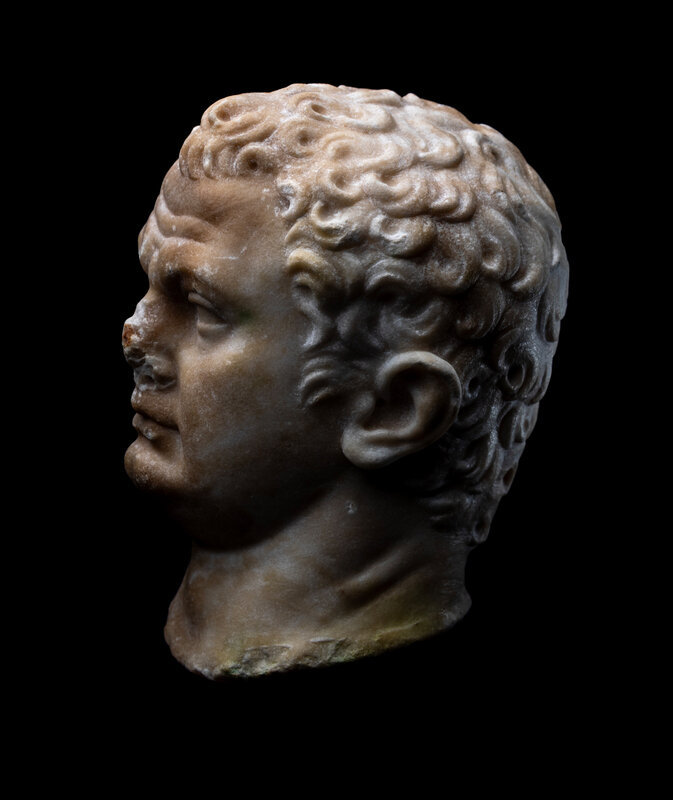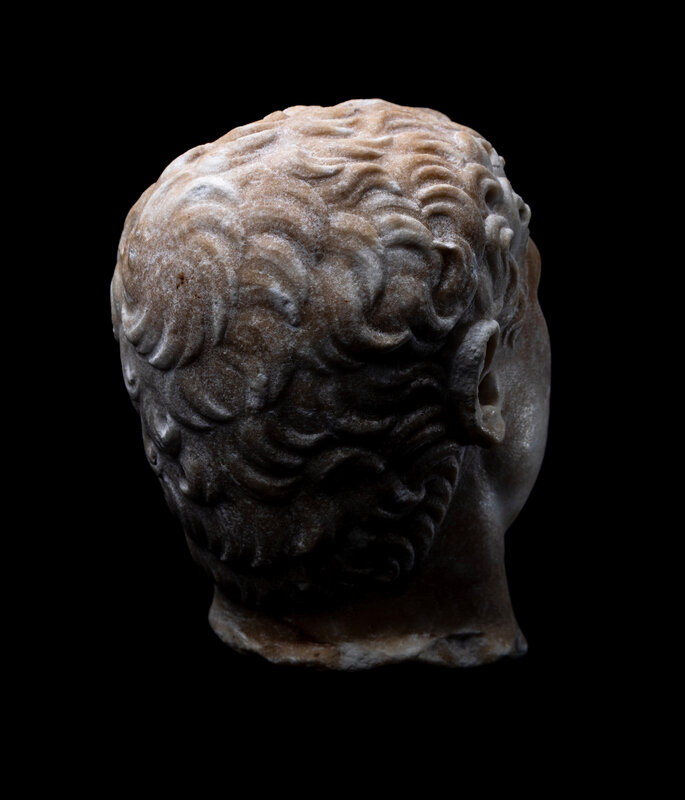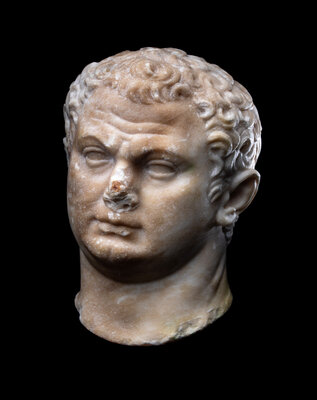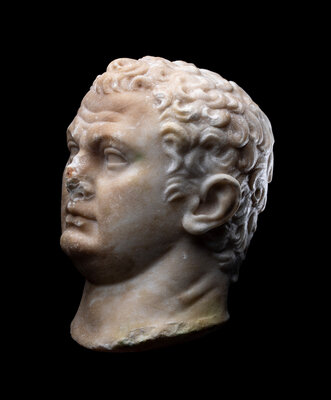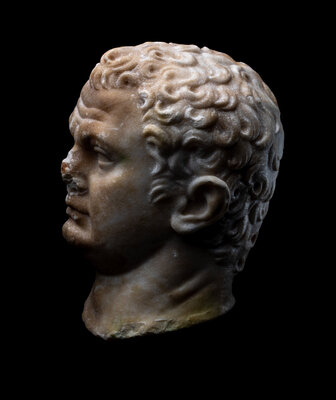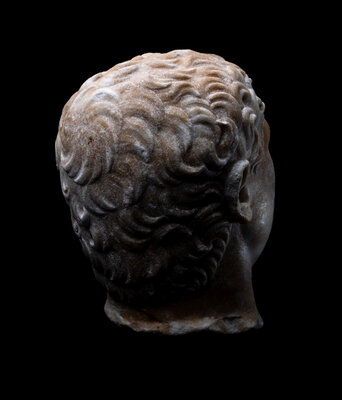Lot 179
A Roman Marble Portrait Head of the Emperor Titus
Sale 1343 - Antiquities and Ancient Art
May 23, 2024
10:00AM CT
Live / Chicago
Own a similar item?
Estimate
$10,000 -
15,000
Price Realized
$24,130
Sold prices are inclusive of Buyer’s Premium
Lot Description
A Roman Marble Portrait Head of the Emperor Titus
Flavian Period, Reign of Emperor Titus, 79-81 A.D.
Height 7 inches (17.78 cm).
Property from a Private West Coast Collection
Provenance:
Doyle, New York, Old Master & 19th Century Paintings, Drawings & Prints, 19 October 2023, Lot 501. [where catalogued as a 'Roman-style Portrait Head of Caracalla']
The Senate and people of Rome eyed the end of aging Vespasian’s reign with a healthy degree of trepidation, having endured years of strife under Nero. Titus, the heir apparent, was not expected to be the same steadying force his father had been. Pushing forty by the time he became emperor, Titus Caesar Vespasianus was less playboy prince and more grizzled military man. Much of his adulthood was spent on military campaigns, including most famously the brutal suppression of Judea’s Civil War, with subsequent sack of Jerusalem and destruction of its Temple. Upon succeeding to the throne, he wasted no time in making lavish overtures to his subjects, inaugurating the Flavian Amphitheater (the ‘Colosseum’) on the site of Nero’s pleasure palace with a staggering hundred days of gladiatorial games and violent spectacles featuring exotic animals. This splashy largesse and other initiatives for the public good were effective, outweighing the unfortunate calamities (most notably the eruption of Vesuvius) that marked his short tenure as emperor.
Given the brevity of his reign (lasting just over two years), his sculpted and numismatic portraits were relatively uniform, all adopting the salient features of Vespasian’s official image but marked by a greater tendency towards fleshiness than age. This continuity of countenance visually implied Titus’ even temperament and stabilizing intentions, projecting dynastic security during a potentially fraught transition of power. Here, the hairline recedes slightly over the wide, creased brow, with curls brushed forward in front of the ears. As in his father’s portraiture, the likeness is characterized by small, somewhat close-together eyes marked by prominent lids. A slightly cleft chin distinguishes Titus from his younger brother Domitian, and the slightly pursed mouth is a far cry from his successor’s recessive lower lip. The slight turn that enlivens this head can be found frequently in surviving portraits of Titus, both bust and full-length formats, including the cuirassed statue from Herculaneum now in Naples (Museo Archeologico Nazionale, Inv. no. 6059), the full-length togate statue from the Lateran (Musei Vaticani, Inv. no. 2282), and the bust-length example in the Schloss Erbach Collection (Inv. no. 80313).
For more on Titus’ portraits, see G. Daltrop, U. Hausmann, M. Wegner, Die Flavier, das Römische Herrscherbild II, 1 (1966); D.E.E. Kleiner, Roman Sculpture, p. 172; I. Jucker, Skulpturen der Antiken-Sammlung Ennetwies, Mainz am Rhein, 1995, Band 1,
Condition Report
Contact Information
Auction Specialist
